Public Reference Library Services
Writer:
Hendrikus Franz Josef, M.Si
Regional Library and Archive Office of
2019
Abstract
In general, the library collection in terms of contents consists of two types, namely circulation collections (commonly borrowed textbooks) and reference collections. In utilizing a library that users must know and understand is to understand each of the functions of these types of collections so that the search for information in the library runs effectively and efficiently. Circulation collections (textbooks) are generally teaching and science books in which each chapter is a unified interconnected subject. Its use usually must be read in its entirety. Different from the reference collection, this collection is a collection that provides an explanation of certain information. This information is comprehensive in its scope; solid description, functions facilitate the discovery of information quickly, precisely and correctly. This collection is arranged with certain systems: alphabetical systems (dictionaries, encyclopedias), chronological systems (summaries), table systems (statistics), regional systems (atlases, maps), class systems (bibliography, handbooks, almanacs). Reference books are books that are published primarily to be read to get information from to be read in a comprehensive or continuous manner. The work of reference books is called secondary library materials or reference books. Primary library books are books that contain information 'directly' from the first hand of the author. For example writing in a magazine, research report or seminar paper. Information in secondary library material is not direct information from the author, but only a collection of information from various sources. Characteristics of reference books can be seen from their composition; some are arranged in descending order, some are arranged in chronological order (that is, the way they are arranged according to the time of the event), and some are arranged systematically on the subject. Generally a good reference book is equipped with an index.
Preface
Actually, what is the meaning of reference?. In general, the meaning of a reference is an information that is used as a reference or reference source to strengthen or reinforce a statement. Another opinion says the meaning of reference is something that is used by the information provider to support or reinforce his statement. Etymologically, the word "reference" comes from English, which is "refer to" which means "refers to" something or someone's statement. Thus, the word reference can be interpreted as a reference that describes information from related sources. References can be factual or non-factual. Factual references are generally in the form of factual objects, statistics, testimonies, and others. Non-factual references often take the form of stories, hypotheses, literary quotations, and analogies.
Basically there are several goals for adding references in an article. Referring to the meaning of the reference above, as for some purposes of making references are as follows: 1). Strengthen Statements or Arguments. Usually the information conveyed, both through statements and writings, requires references to strengthen the statement. With the reference, then a statement or argument has a strong foundation and basis so that it can be considered as a statement that can be accounted for.2). Avoid plagiarism. Each person's work (journals, research, etc.) is the intellectual property of the author. When someone uses information from the work of others, then he must include the source of the reference to his writings so as not to be considered as a plagiarist. 3). Form of Appreciation for the Work of Others. The writers and researchers have spent time, thought, and energy in making a work. Therefore, it is appropriate for writers who use the work of others to explain where the source of reference as a form of appreciation.4). Adding Information For Readers. Another purpose of adding references in writing is to provide readers with deeper information about a topic. With the reference, the reader can dig further information about the topics discussed.
Part I
Reference Collection Background
Collection of reference library materials is a type of publication of scientific literature or specific special collections that are often used as a reference for research or data searching through proven scientific facts. Today's reference collection can be in the form of electronic documents or physical printing. In addition, printed books and research publications, physical documentary works are often used are dictionaries, encyclopedias, almanacs, thesaurus, scientific journals, catalogs, authentic manuscripts and atlases. While data from electronic documents in the form of DVDs, CD-ROMs, recorded data, application programs or internet.
Types of Referents, namely: Factual and non factual reference material may exist in the following three forms: 1). Evidence like, statistics, examples and testimonies; 2). The values used by people who accept the argument; 3). Credibility of information providers. Like the person giving the information may lead to his own experience to be able to convince the listener that he is capable.
In general, referral services are the same for each type library that is providing good and efficient service to library users both directly, for example, answering questions from visitors and those that are nature indirect such as fostering and developing reference collections. The job of the referral service works well if officers pay attention to the users they serve. Different the people served are also different in their needs. In addition, must attention to user needs, of course the library must provide a book that can provide information
appropriate to the user.
So that the referral service task can run with as well as possible, the referral officer must first understand referral functions. The functions are as
following:
1). Information. Provide answers to questions the needs of information users. Usually the question is one each other has nothing to do. For the sake of the smooth referral task each question should be recorded and then classified.
2). Guidance. In carrying out daily tasks, the referral officer also need to set aside time to be able to provide guidance to library users so that users can
use the library well and efficiently. Also, so the user finds the right book and is suitable with the field of user science. Such guidance for example in terms of the use of library catalogs, the use of tools microreader, digital collections and more. The selection and use of reference books and other library materials.
3). Directions or Instructions. Provide guidance or information to library users regarding the use of the ibrary in general, the use of bibliographic sources, and other reference collections. Besides intending to introduce good ways to use the library to users, it also aims to stimulate and increase the use of the library. This briefing can be done informally as is usually done for visitors who come to ask for lighting and can also be done formally, meaning that it is given through an instructional program that was previously prepared and arranged carefully and thoroughly and adjusted to the needs that exist. These formal methods are usually carried out by the university library for example by including it as one of the lecture material in a campus introduction event or student orientation given to new students. Props are very necessary in this direction. But which most important are capable and clever officers in the teaching learning to process.
4). Supervision. The referral officer can observe the users or visitors of the library both in terms of the required information needs and the social background and level of education of the user as well as the field of education he occupies. For example whether the user the researchers from the field of animal husbandry or students who are looking for information about specific livestock raising systems for written material. So the information provided by the officer must be in accordance with the background knowledge and purpose of the library users.
5. Bibliography. For the sake of research or introducing reading interesting and kind, referral officers usually make or compiling bibliographies. At the college the preparation of this bibliography done at the request of teaching staff or researchers and students for the purposes of research or papers. To carry out these functions required referral officers who meet the required requirements for a referral librarian.
Part II
Kinds of General Reference Collection Types
Referral services are quite strenuous. Reference is the communication between the book and the reader. At all times he must be ready to answer and give instructions to the reader about how to find answers or information precisely the other assistance needed. So that these functions and objectives can be achieved, it should the operation of referral services must be supported by officers who meet the following requirements:1). Willing to help library users; is an officer who remains in the referral service; Friendly and determined; Competent, with the following characteristics and characteristics, have broad general knowledge; know the types of reference collections and their respective uses; knowing library materials into a collection Mastering guidance techniques. 2. Grouping of complete reference library materials and full versions. 3). Collaboration between libraries in the field of using reference library information.
Types of referral services can be distinguished according to the type of work as follows: 1) main reference services: ember the provision of general information, both about libraries, collections and other things that easily and quickly fulfill it; Ember providing specific information, which requires the reference of existing library materials, or consultation with other library staff; giving assistance to search literature or library materials using catalogs, bibliographies, and other search tools; giving guidance to use the reference collection; Providing direction assistance to find certain subjects in books that are in accordance with the interests and areas of user studies. 2). Main reference services: establish relationships and collaboration with libraries and or services, other information in the field of information use. Organizing education on the use of discovery tools; returns such as catalogs and bibliographies, as well as the use of reference collections; organizes exhibitions of library collections primarily; to introduce the newly received library material. 3) organize the reference collection well so that it is easy to use. 4) Record and collect statistical data on referral service activities.
The operation of referral services depends on the size of the library. In small libraries this reference work is usually done by the head of the library. A rather large library requires a special officer who qualifies as a reference officer or librarian, so that he can carry out this work better. Even in larger libraries, not only does it require special officers, but also a section that specifically organizes referral work as we are familiar with the referral service section.
Thus, the operation of the referral service is necessary carefully prepared and cooked. Matters that need to prepare a referral service include the following:
1) spatial layout. Reference room should be separated from other rooms. Usually the reference is to get a rather long-sized room (the length of the room is equal to twice its width). Bookshelves are placed along the wall. For security you should only provide one entrance to the reference room. Near the entrance to be provided by the officers (for book security). Books that are rare or rare to be placed near officers. Equipment that needs to be provided in the reference room includes a reading table and preferably a long one, telephone if available and reproduction facilities such as photocopiers. The information desk should be placed close to the catalog cabinet so that officials can immediately provide assistance to visitors if needed in order to use the catalog.
2) Collection. All collections in the library even outside the library, if necessary, can be used by internal reference officers its duty in providing information to the reader. But must have at least the basic resources that can used to answer reference questions. Basic source this is commonly referred to as a collection of references. Outside the collection in the form of books there is no other type of reference collection in the form of special materials such as clipping, pamphlets, microfilm and so on. Reference books usually include the following types: Encyclopedias, Dictionaries, Yearbooks, Manuals guide / directories, Handbooks and handbooks, Bibliographies, Indexes and Abstracts, Biographical sources, Geographical sources (atlases, maps, science dictionaries earth, etc.), Government publishing, Periodicals and special library materials.
Often also used by the referral officer to search information needed. In fostering and developing reference collections must always be maintained so that the reference collection consists of good books and guaranteed quality. There are several things that must be considered in the procurement of reference books it is still guaranteed, namely:
1. Book authority. In determining the authority of a book it is necessary to look at things such as whether the author is an expert in the field of science covered by the book and whether he has experience. Besides the author, the publication also needs to be assessed, for example, whether the book publisher experienced, already have a good name and so on. A good publisher usually publishes good and quality books.
2. The scope of the contents of the book. The scope of the contents of the book also needs attention, to what extent is the scope covered by the subject of the book, what are the limits, what is the purpose of the author, and whether the contents of the book are really new and so on.
3. The author's purpose in writing a book (for readers who how the book was composed / the target audience). Here what must be considered is the group of readers how the book was written or written. Is for a group of readers with a certain level of education, or a group of college educated readers. Or also can be assessed in terms of age for example whether the book is authored for children, or for adults. From a professional perspective, for example, is the book intended for merchants, lawyers, farmers' groups and so on. For example, a university library should choose books intended for students, teaching staff and researchers. Do not choose books intended for the public whose level of knowledge is not too high such as farmers and so on. So the referral officer should choose the book accordingly with the level of reading ability and educational background readers, in this case, library users
4. The shape and composition of the book. It should also be noted how the quality of the paper is how the quality of the binding and so on. This will greatly affect the resilience of the book. In addition to the physical structure needs to be considered, whether arranged systematically, for example in alphabetical order, or chronologically, or according to the subject (subject). Is it equipped with an index or no index at all, how is the index arranged. Also, important is the layout of the book also needs to be noted.
Conclusion
Reference librarians must be responsive to user needs, ready to answer user questions, both short questions and questions that require detailed answers according to their needs. If there are users who have difficulty in finding the library materials they need, the reference librarian should guide as soon as possible, so they know how to find and use library collections, especially reference collections. Success factors for reference services include: 1. Completeness of collection; 2. The ability of the reference officer; General insight and knowledge;. Knowledge of the types, ways and uses of reference collections, c. Library knowledge, d. Ability to understand user needs. Ability in the field of information technology, f. The ability to communicate well. In utilizing a library that users must know and understand is to understand each of the functions of these types of collections so that the search for information in the library runs effectively and efficiently.
Bibliography
Depdikbud. Dikti, Pedoman Pelayanan Sirkulasi dan Referensi Perpustakaan Perguruan Tinggi.
Gessesse, Kebede, Collection development and management in the twenty-first century with special reference to academic libraries: an overview, Library management 21.7, 2000;
Husna, Hanisatul, and Elva Rahmah, Evaluasi Layanan Referensi di Badan Perpustakaan dan Kearsipan Provinsi Sumatera Barat, Ilmu Informasi Perpustakaan dan Kearsipan 4.1, 2015;
Katz, W.A, Introduction to Reference work. Volume I Basic Information Sources. 4 Th editior.
Kalsum, Umi, Referensi sebagai layanan, referensi sebagai tempat: sebuah tinjauan terhadap layanan refernsi di perpustakaan perguruan tinggi, 2016;
Marnodi, S., Referensi : Suatu Pengantar. Seri Penerbitan No: 21.Yogyakarta : Pusdiklat Perpustakaan IKIP
Perpustakaan Lainnya
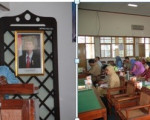 Pembukaan BIMTEK Pengelola Perpustakaan Sekolah Tahun 2016 Angkatan I BPAD DIY
Pembukaan BIMTEK Pengelola Perpustakaan Sekolah Tahun 2016 Angkatan I BPAD DIY
Bertempat di gedung BPAD DIY Jl Tentara Rakyat Mataran no 29, pada hari Senin tanggal 4 April 2016, BPAD DIY Bidang Pengembangan...
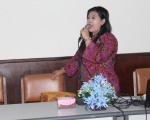 Pemasyarakatan Budaya Jawa “Estetika, Etika Tembang Jawa Dolanan Anak Kanggo Sumber Pandhapuking Watak lan Budi Pakarti”
Pemasyarakatan Budaya Jawa “Estetika, Etika Tembang Jawa Dolanan Anak Kanggo Sumber Pandhapuking Watak lan Budi Pakarti”
Dalam rangkamemasyarakatkan budaya Jawa dan sosialisasi koleksi Center of Excellence, BPADDIY kembali menyelenggarakan...
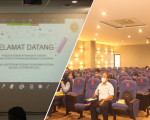 FORUM PERANGKAT DAERAH 2021
FORUM PERANGKAT DAERAH 2021
Berkaitan dengan rencana kerja tahun 2022, pada hari Selasa 23 Februari 2021 Dinas Perpustakaan dan Arsip Daerah DIY...
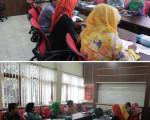 RAPAT EVALUASI SERAPAN KEUANGAN TRIWULAN III
RAPAT EVALUASI SERAPAN KEUANGAN TRIWULAN III
Jumat, 22 Juli 2016telah diadakan Rapat Evaluasi Serapan Keuangan Triwulan III yangdiselenggarakan oleh Subbag Program Data dan TI...

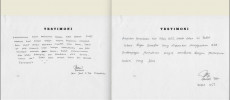 Kegiatan Penyususnan Katalog Induk Daerah (KID)
Kegiatan Penyususnan Katalog Induk Daerah (KID)